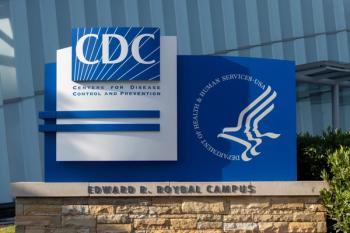
CMS Finalizes Emergency Preparedness Rule for Medicare, Medicaid
Final requirements issued that address the health of safety of Medicare and Medicaid recipients during an emergency.
The US Centers for Medicare and Medicaid (CMS) have finalized a rule that creates emergency preparedness requirements to increase safety and increase coordinated responses during emergencies.
Caring for the health and safety of many Medicare and Medicaid beneficiaries during emergencies has been at risk in places such as
Certain providers participating in Medicare and Medicaid will now be required to plan for disasters, and coordinate with local officials to ensure that the healthcare facilities are able to provide care during emergencies, according to a press release from the CMS.
“Situations like the recent flooding in Baton Rouge, Louisiana, remind us that in the event of an emergency, the first priority of health care providers and suppliers is to protect the health and safety of their patients,” said CMS Deputy Administrator and Chief Medical Officer Patrick Conway, MD, MSc. “Preparation, planning, and 1 comprehensive approach for emergency preparedness is key. One life lost is 1 too many.”
This rule is the result of a recent review of Medicare emergency preparedness regulations, where the CMS found that the current requirements were not up to par. The old regulations did not address communication to coordinate with other healthcare systems, contingency planning, and staff training, according to the CMS.
The final rule requires that providers and suppliers adhere to 4 guidelines:
1. Emergency plan
An emergency plan that focuses on the capacities and capabilities critical for emergency preparedness must be created.
2. Policies and procedures
Providers and suppliers must create and implement policies and procedures based on the emergency plan and risk assessment.
3. Communication planThis plan has to comply with federal and state laws, and coordinate patient care within the facility, across healthcare providers, and with state and local public health departments and emergency systems, according to the press release.
4. Employee training and testing program
This program includes annual training, drills, exercises, or testing the plan in an actual emergency.
However, these regulations may be modified to better fit specific providers and suppliers. The final rule reflects changes responding to the open comment period, and will not require additional generator testing, specific testing exercises, or allow a separate facility in the healthcare system to take part in the program, the CMS said.
Reports, toolkits, and samples regarding emergency preparedness will also be available to providers and suppliers for increased preparedness.
“As people with medical needs are cared for in increasingly diverse settings, disaster preparedness is not only a responsibility of hospitals, but of many other providers and suppliers of healthcare services. Whether it’s trauma care or long-term nursing care or a home health service, patients’ needs for health care don’t stop when disasters strike; in fact, their needs often increase in the immediate aftermath of a disaster,” said Nicole Lurie, MD, MSPH, US Department of Health and Human Services assistant secretary for preparedness and response. “All parts of the healthcare system must be able to keep providing care through a disaster, both to save lives and to ensure that people can continue to function in their usual setting. Disasters tend to stress the entire health care system, and that’s not good for anyone.”
Newsletter
Stay informed on drug updates, treatment guidelines, and pharmacy practice trends—subscribe to Pharmacy Times for weekly clinical insights.






















































































































































































































